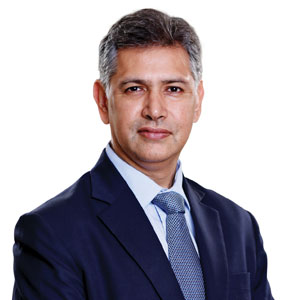THANK YOU FOR SUBSCRIBING

Field Service Management Lifecycle
Dean Lane, Executive or CIO Consultant, The Office of the CIO & Mayumi Okada, Executive or CIO Consultant, The Office of the CIO


Dean Lane, Executive or CIO Consultant, The Office of the CIO & Mayumi Okada, Executive or CIO Consultant, The Office of the CIO
"Excellent Customer Service requires having an excellent Field Service Organization"
Have you ever thought about the implementation or management of the Field Service function as a Lifecycle? Consider the Field Service Management, as a part of an overall Service Delivery Lifecycle, is an iterative five-step process as depicted in the figure,
Service Delivery Model & Infrastructure
The Field Service Management Lifecycle essentially begins by defining a Service Delivery Model and Infrastructure necessary to support that model.
Strategic Model can be a combination of following options:
• Centralized or Decentralized Field Service Desk
• Outsourced or In-house Service Support
• On-site, Phone based, or Web-based Support Model
• Multilingual Options
• Generalist or Specialized Queue-based Support
• Centralized or Decentralized Field Service Dispatch
Strategic Infrastructure can be a combination of following options:
• Field Service Organization Chart and Number of Support Tiers
• Defined Processes, Issue Tracker and Escalation Paths
• Field Service Assets and Maintenance Plan
• Inventory and Supply Chain
• Technician Training and Searchable Archive of Issues/Resolutions
• Unilateral or Multi-level Service Support Version Control
• Service Support Pricing
Service Demands & Resolution or Escalation
The Service Demands starts with a Customer’s Call (Ticket) creation, categorization, assignment and resolution describe the activities as managed by the service personnel. From the point a call ticket is received, to call assignment and through the resolution of the call represents the 1st and/or 2nd Tier of Service.
The strategy in this phase includes:
• Develop a process to handle real-time call volume (peaks/troughs) with 2 skill levels of expertise
• Develop automated or Interactive Voice Response (IVR) options
• Develop live chats, offline responses &/or static postings
• Re-routing, call to available Field Service Personnel
• Pro: Optimize their utilization and improve meantime to resolve.
• Con: Field Service Personnel can become overloaded
Field Service Delivery
When the Service Demand cannot be resolved in Step 2 above, the next level is Field Service. This clearly is where the rubber meets the road and the Field Service Technician needs a solid Service Infrastructure in order to represent a world class company, no matter how small the company.
Beyond adequate training, the Field Service technicians need technology in order to be efficient at resolving the issue in front of the Customer. Technology needs to be an asset, not a liability, like an anchor being dragged along by the Field Service technicians as they try to do their jobs. Mobile service support assets, such as laptops, tools, etc. are now standard and need to be built for the service environment that they will be used in. Factors such as durability, speed performance, software features, etc. of the field equipment all need to be planned for upfront and evaluated yearly at a minimum.
In short, the Field Service Technician requirements need to be clearly defined. Maintenance of the Field Service Support assets also needs to be clearly defined and implemented. These days distribution of vetted software upgrades, compatibility with field service hardware with other hardware/software, and real-time support to the field service technicians need to be designed into the Service Delivery Model and Infrastructure.
Service Performance Evaluation
This stage reflects back on the quality of service performed in order to improve the Field Service Management Lifecycle. Turns out the service performance is closely connected with the culture of any organization. Process driven organizations pay more attention to hard measures of services performance, but here is where the challenges start for an organization, even process driven ones.
Strategically, an organization needs clearly think out and defined priorities for its Customers and services provided to them, especially it’s Field Service. Otherwise ad hoc priorities will shape the organization and its performance will reflect the lack of clarity, which ultimately will reflect on their bottom-line.
Upfront consideration that will impact the result of the evaluation:
• Higher Initial Handling Time:
• Pros: (a) Provides greater understanding of the issue
(b) Potential first call resolution
(c) Ultimately greater customer satisfaction
• Cons: (a) Increase hold time for customers in queue
• Built-in diagnostics with remote access:
• Frequency feedback by the system, software or hardware, can create an environment of proactively providing service prior to actual failure.
• Autonomy:
• Guidelines before escalation authorization is required.
• Field Service Technician Internal Feedback:
• Create a process where the frontline Field Service Technician can provide internal feedback to improve both the product/services based on interaction with the Customer.
• Service Tiers Focus Groups:
• Create non-management liaisons from each Service Tier Group.
• Focus group can give periodic recommendations to their management, who in turn can take action, such as budgetary, to execute the change. For example, screen/procedure changes or equipment upgrades, etc.
• Focus group members can be used to test out new changes before a full rollout, and train/support their teams during the implementation.
Points to consider when evaluating service performance:
• Method of Evaluation: Hard and/or soft forms of measurements. Note: Organizations seeking superior customer experience often use soft measures, such as customer feedback surveys, internal assessments from real-time monitoring and internal audits.
• Audits: Third party or independently run internal audits
• Sample Size: Selecting the right distribution of counts and variants of customers to be surveyed is a critical success factor in the measurement process
Service Model or Infrastructure Enhancement
The soft and hard performance measurements provide the input into the iterative and evolving the Service Delivery Model and Infrastructure with valuable enhancements necessary to improve the Field Service Management Lifecycle.
Below are some examples of how Service Performance Evaluation can lead to the Service Model/Infrastructure Enhancements by identifying areas that need improvement:
• Service delivery training programs built to provide initial and incremental training should directly correlate to the findings from the audit and quality processes.
• Automation and self-service opportunities should be pursued for those call types that are predictable and high in occurrence.
• Additional system-based enhancements can be provided from tight integration of back-office systems, which leads to an increased accuracy of customer profile information.
• Structured information management provides a strong integration with business systems and account management.
• Standardization of software versions, hardware options, image management, and other controlling procedures also reduce the variants in technological environments further leading to a predictable service management and delivery.
In conclusion, it is easier to keep a Customer than to find a new Customer. Excellent Customer Service requires having an excellent Field Service Organization. By implementing a Field Service Management Lifecycle with an iterative 5-Step process, an organization can efficiently and effectively management this crucial component of a success business.
Weekly Brief
I agree We use cookies on this website to enhance your user experience. By clicking any link on this page you are giving your consent for us to set cookies. More info
Read Also
Artificial Intelligence - Myths And Truths
Sustainable Future through Innovative Technology Solutions
The Future Relies on Augmented AI
Digitalization with the use of digital technologies/Improving business through digital technologies
How Marco's Pizza Leaned On Technology To Succeed Amid The Pandemic By Quickly Pivoting To Contact-Free Delivery And Curbside Carryout
Bunnings Diy Digital Transformation
For a Smarter City: Trust the Data, Ignore the Hype
Smart Community Innovation for the Post Pandemic





















